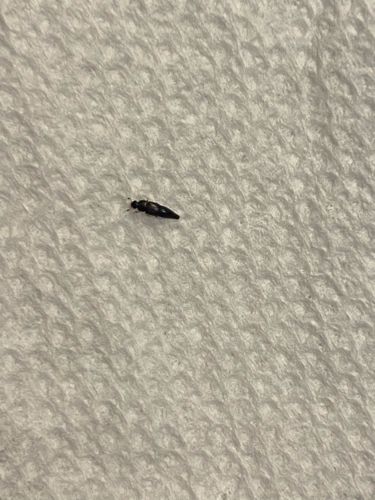Thrips
Scientific Name: Various species, common pest genera include Frankliniella, Thrips, Scirtothrips.
Order & Family: Order Thysanoptera, Family Thripidae (most common pest species) or others within Thysanoptera.
Size: Typically 0.5 – 2 mm in length.

Natural Habitat
Widely distributed globally, found on a variety of plants including agricultural crops, ornamental plants, fruits, vegetables, and even in flowers and leaf litter. Some species can also be found indoors on houseplants or entering through open windows.
Diet & Feeding
Mostly plant sap, pollen, and fungal spores. Some species are predatory on other small insects or mites.
Behavior Patterns
Thrips are generally fast-moving insects, and adult thrips can fly, aiding in their dispersal. They often feed by piercing plant cells and sucking out the contents, leaving behind silvery or distorted tissue. They reproduce rapidly, especially in warm conditions, and many species can reproduce asexually (parthenogenesis). Larvae and nymphs resemble smaller versions of adults but lack wings. They typically pupate in the soil or on the plant before emerging as adults.
Risks & Benefits
Risks: Many species of thrips are significant agricultural and horticultural pests, causing damage to plants by direct feeding (leading to stunted growth, distorted leaves, scar tissue on fruits and flowers) and by transmitting plant viruses (e.g., Tomato spotted wilt virus). Their small size makes them difficult to detect and control. Benefits: Some thrips species are predatory and can help control populations of other pest insects and mites (e.g., predatory thrips in the family Aeolothripidae). They are also a food source for other beneficial insects.
Identified on: 8/20/2025